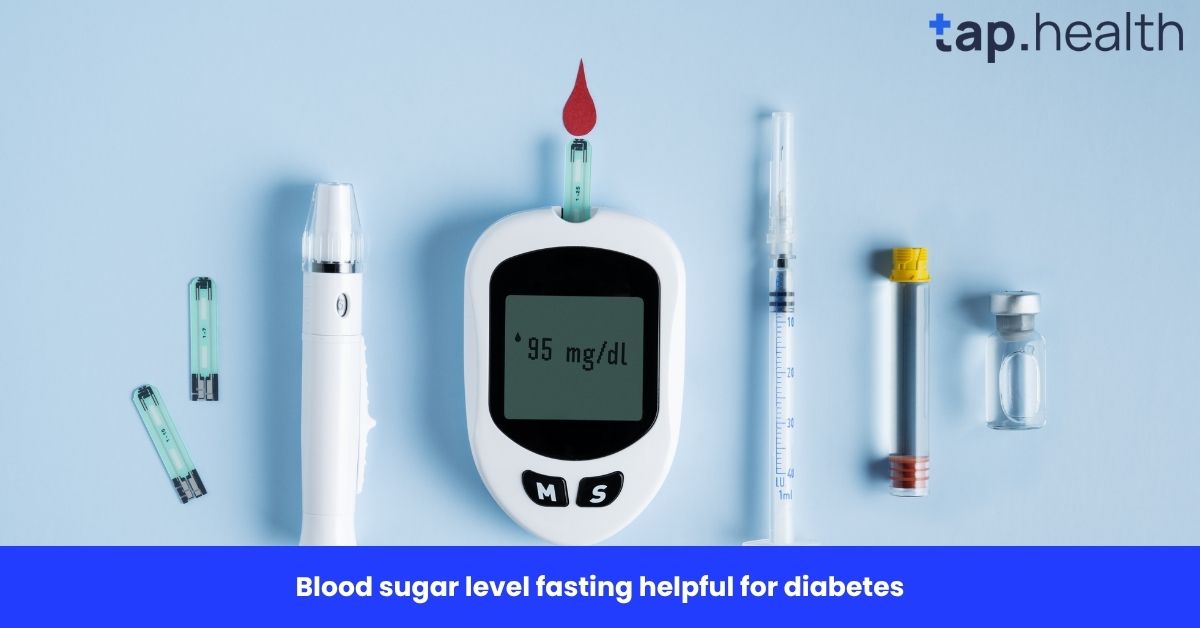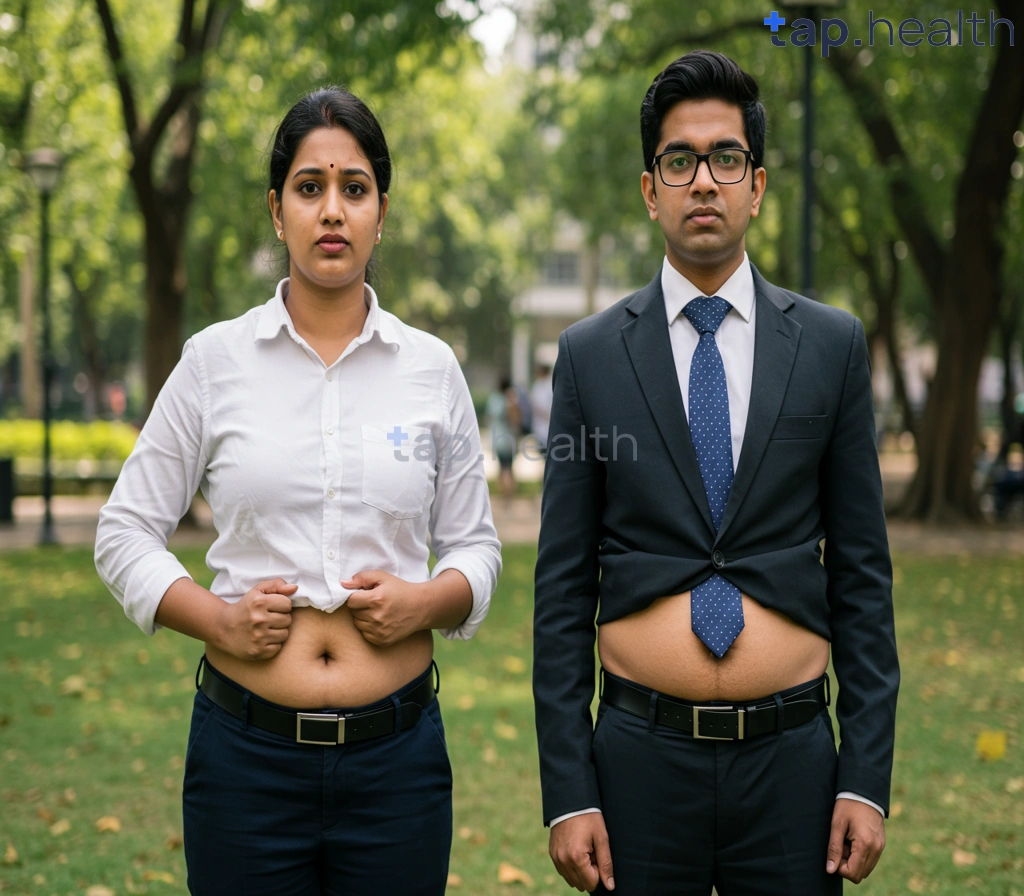If you searched for “blood sugar level fasting heloful for dibiets”, you’re in the right place. In plain English, you want to know whether fasting blood sugar (also called fasting plasma glucose or FPG) is helpful for understanding and managing diabetes, what healthy numbers look like, and how different types of fasting fit into diabetes care. This guide explains it all in simple language—without dumbing it down.
What exactly is fasting blood sugar?
Fasting blood sugar (FBS/FPG) is your blood glucose measured after not eating for at least 8 hours, usually first thing in the morning. It shows how your body controls glucose when there’s no recent meal to push sugars up.
Typical diagnostic cut-offs used worldwide:
- Normal: under 100 mg/dL (below 5.6 mmol/L)
- Prediabetes: 100–125 mg/dL (5.6–6.9 mmol/L)
- Diabetes: 126 mg/dL (≥7.0 mmol/L) or higher on two separate tests
These ranges are used by major medical bodies and hospitals. Mayo Clinic+1
Why it matters: fasting numbers are stable, easy to measure, and strongly linked with future diabetes risk. They’re part of the standard tests doctors use along with HbA1c and sometimes an oral glucose tolerance test (OGTT). American Diabetes Association
What is a healthy fasting level if you already have diabetes?
When you’re living with diabetes, your doctor will set targets rather than rigid “normal vs abnormal” labels. For most non-pregnant adults with diabetes, the American Diabetes Association (ADA) recommends:
- Before meals (pre-prandial / “fasting” at home): 80–130 mg/dL (4.4–7.2 mmol/L)
- 1–2 hours after the start of a meal (post-meal peak): <180 mg/dL (<10.0 mmol/L)
- A1C: <7% for many adults, individualised up or down based on age, comorbidities, and risk of lows. Diabetes Journals+1
These are general goals—your clinician may loosen or tighten them depending on your health, medications, and risk of hypoglycaemia (low blood sugar). Older adults or people with multiple health issues may need less strict goals. Diabetes Journals
Pregnancy is different. Targets are tighter (often fasting <95 mg/dL), and management is specialist-led. Wisconsin Academy of Family Physicians
Fasting blood sugar vs HbA1c vs CGM: which one matters most?
Think of these as three camera angles on the same match:
- Fasting blood sugar (FBS): a morning snapshot—useful, quick, and cheap.
- HbA1c: your 3-month average—great for tracking long-term control and risk of complications.
- CGM/BGM: continuous or finger-stick monitoring shows patterns (overnight highs, post-meal spikes, time-in-range). Diabetes Journals
Most care plans use all three at different times to get the full picture. Diabetes Journals
Is “blood sugar level fasting” helpful for diabetes?
Yes—hugely. Regular fasting checks help you and your doctor:
- Fine-tune medication doses (e.g., basal insulin).
- Spot morning patterns like the dawn phenomenon (a natural early-morning hormone surge that raises glucose). Mayo Clinic+1
- Differentiate issues (e.g., rare Somogyi effect—a rebound high after a night-time low—now considered uncommon). American Diabetes Association+1
- Track lifestyle progress (diet, physical activity, sleep).
But fasting sugar isn’t the whole story. If fasting numbers look fine but A1C is high, you may be having post-meal spikes. That’s where meal timing, carb quality, and CGM insights help. Diabetes Journals
What do your morning numbers actually mean?
- Under 80 mg/dL (4.4 mmol/L): may be too low for many, especially on insulin or sulfonylureas—confirm and discuss.
- 80–130 mg/dL (4.4–7.2 mmol/L): within ADA pre-meal target for many adults with diabetes. Diabetes Journals
- >130 mg/dL (7.2 mmol/L): could indicate overnight/liver glucose output or insufficient basal insulin; confirm pattern over several days. Dawn phenomenon is common. Mayo Clinic
- ≥180–200 mg/dL repeatedly: talk to your clinician; medications, meal composition, or sleep/stress may need attention.
Read this : Is a 105 mg/dL blood sugar level dangerous?
Why do fasting sugars rise even when you didn’t overeat?
Hormones (cortisol, growth hormone, glucagon) nudge your liver to release glucose between ~3–8 am. In diabetes, insulin isn’t enough to counter that, so you wake up high—the dawn phenomenon. Solutions include adjusting medication timing/dose, a small balanced bedtime snack (in select cases), or changing evening activity. Use CGM or 2–3 am checks to see your pattern. Mayo Clinic+1
Somogyi effect (a rebound high after a nocturnal low) is rare in the CGM era; most morning highs are not from overnight hypos. American Diabetes Association+1
Intermittent fasting and diabetes: is fasting itself “helpful”?
Intermittent fasting (IF)—like time-restricted eating (TRE), 5:2, or alternate-day fasting—can reduce weight, improve insulin sensitivity, and lower glucose for some people with type 2 diabetes, especially with medical supervision. Recent trials and reviews report improvements in glucose metabolism and feasibility without high rates of severe hypoglycaemia when medications are adjusted appropriately. Frontiers+1
However, IF isn’t for everyone. Risks include hypoglycaemia (especially on insulin/sulfonylureas), dehydration, headaches, and disordered eating in vulnerable people. Any fasting plan must include medication review and safety education. Lippincott Journals
Bottom line: IF can be a tool, not a magic fix. Consider it only under clinician guidance, with clear rules for glucose checks, when to break the fast, and how to adjust doses.
Special case: fasting during Ramadan (and other religious fasts)
Many people with diabetes choose to fast for spiritual reasons. IDF-DAR (International Diabetes Federation–Diabetes and Ramadan) guidelines recommend pre-Ramadan risk assessment, structured education, and treatment adjustments. People at high risk (e.g., history of severe hypos, DKA, advanced kidney disease) are advised not to fast. If you fast, frequent glucose monitoring is allowed and does not break the fast. Diabetes Research and Clinical Practice+1
Studies show the IDF-DAR risk tool helps predict complications and supports safer fasting when used with education. PMC
Practical tips for religious fasting:
- Have a pre-fast medical review 6–8 weeks prior.
- Modify medications (e.g., timing/ doses of insulin or tablets).
- Know red flags to break the fast: glucose <70 mg/dL (3.9 mmol/L), >300 mg/dL (16.7 mmol/L), or symptoms of hypo/hyperglycaemia or dehydration.
- Prioritise hydration and balanced suhoor/iftar plates with fibre, protein, and healthy fats. Right Decisions
A word of caution with SGLT2 inhibitors and fasting
SGLT2 inhibitors (e.g., dapagliflozin, empagliflozin) are great for heart and kidney protection, but they rarely can trigger euglycaemic diabetic ketoacidosis (EDKA), sometimes during illness, surgery, or prolonged fasting. Health agencies and reviews advise withholding SGLT2 inhibitors before major procedures or during acute illness and being cautious with prolonged fasting. If you’re on an SGLT2 inhibitor, review any fasting plan with your doctor first. NCBI+2PMC+2
Case reports and expert guidance specifically note fasting as a precipitating factor for EDKA; risk rises with dehydration and low insulin states. BioMed Central+1
How to improve fasting blood sugar—simple, proven steps
1) Nail the evening routine
- Early, light dinner with fibre (dal, leafy sabzi), lean protein (paneer, eggs, fish, pulses), and smart carbs (millets, whole wheat roti, brown rice).
- Gentle post-dinner walk (10–20 minutes) to aid overnight control.
- If you get nocturnal lows, your clinician may advise a small balanced snack—don’t self-experiment if you’re on insulin.
2) Mind the medications
- Work with your doctor to align basal insulin timing/dose with your dawn pattern.
- Sulfonylureas can cause night-time lows; report symptoms.
- SGLT2 inhibitors + prolonged fasting need caution (see above). NCBI
3) Sleep and stress
Poor sleep and high stress hormones push fasting sugar up. Aim for 7–8 hours of quality sleep; try breathing, light yoga, or mindfulness at bedtime.
4) Stay hydrated
Dehydration concentrates glucose and can worsen morning highs—sip water regularly through the day (and during non-fasting hours in religious fasts). Right Decisions
5) Learn your patterns
Use finger-stick logs or CGM to see whether mornings are the only issue or if post-meal spikes drive your A1C. Targets and tactics change with that insight. Diabetes Journals
Myths vs facts about fasting blood sugar and diabetes
Myth: “If my fasting number is fine, my diabetes is controlled.”
Fact: You may still have post-meal spikes raising your A1C. Track both fasting and after-meal readings. Diabetes Journals
Myth: “Morning highs mean I ate badly at night.”
Fact: Often it’s the dawn phenomenon—a hormone surge, not just dinner. Mayo Clinic
Myth: “Testing during Ramadan breaks the fast.”
Fact: Glucose testing does not break the fast. It’s encouraged for safety. MDCalc
Myth: “Somogyi effect is why I’m always high in the morning.”
Fact: It’s rare; dawn phenomenon or waning insulin are more likely. American Diabetes Association
Safe-fasting checklist for people with diabetes
- Know your targets: fasting 80–130 mg/dL (most adults), post-meal <180 mg/dL; individualise with your clinician. Diabetes Journals
- Plan ahead: book a review before you start any fasting pattern (religious or lifestyle).
- Adjust medicines carefully: your doctor may lower or reschedule insulin/sulfonylureas; be cautious with SGLT2 inhibitors. NCBI
- Monitor more often: especially on day 1–2 of a new fasting routine, after dose changes, and if you feel “off”. Diabetes Journals
- Break the fast if glucose <70 mg/dL (3.9 mmol/L), >300 mg/dL (16.7 mmol/L), or if you have hypo/hyper symptoms, vomiting, or dehydration. (These cut-offs are commonly used in structured fasting programmes; follow your clinician’s plan.)
- Hydrate and balance meals during eating windows; include fibre, protein, healthy fats, and slow carbs from Indian staples.
- Review weekly: track fasting numbers, symptoms, weight, and CGM trends; update your plan with your care team.
The role of diet quality (not just meal timing)
Even without formal fasting, improving dinner composition and timing can cut morning glucose:
- Prefer whole grains/millets, dal, vegetables, and lean proteins; limit refined carbs and added sugars.
- Add fibre and healthy fats (groundnut, mustard, sesame oils in moderation; nuts; seeds) to slow glucose rise.
- Keep portions consistent and avoid large late-night meals.
- A 10–20 minute stroll after dinner can reduce overnight levels.
When to see your doctor urgently
- Frequent morning lows (<70 mg/dL), confusion, or fainting.
- Repeated fasting highs (>180–200 mg/dL) despite adherence.
- Symptoms of DKA (nausea, vomiting, abdominal pain, deep breathing, fruity breath), especially if on SGLT2 inhibitors—seek care immediately. NCBI
Key takeaways
- Fasting blood sugar is a key tool for diagnosing and managing diabetes.
- Healthy fasting targets for most adults with diabetes are 80–130 mg/dL (4.4–7.2 mmol/L); tailor with your clinician. Diabetes Journals
- Dawn phenomenon is a common cause of morning highs; the Somogyi effect is uncommon. Mayo Clinic+1
- Intermittent or religious fasting can be done safely only with pre-planning, medication adjustments, and monitoring; some people should not fast. Diabetes Research and Clinical Practice
- SGLT2 inhibitors + prolonged fasting may raise EDKA risk—get personalised advice. NCBI
- The phrase “blood sugar level fasting helpful for diabetes” is accurate in spirit: fasting levels are very helpful, but they’re just one part of a complete plan that also covers A1C, post-meal glucose, and time-in-range. Diabetes Journals
FAQs on Blood sugar level fasting helpful for diabetes
What is fasting blood sugar and why is it checked?
It’s your glucose after 8+ hours without food. Doctors use it to diagnose diabetes and to monitor control because it reflects how your body manages glucose between meals and overnight. Mayo Clinic
What should my fasting number be if I have diabetes?
Many adults aim for 80–130 mg/dL (4.4–7.2 mmol/L) before meals. Your doctor may adjust this based on your age, other illnesses, and risk of lows. Diabetes Journals
Is intermittent fasting safe for type 2 diabetes?
It can be, but only with medical supervision and dose adjustments to prevent hypos. Some studies show improved glucose and weight; others stress side effects and individual variability. Frontiers+1
Why is my fasting sugar high in the morning?
Likely the dawn phenomenon—early-morning hormones push the liver to release glucose. Adjusting basal insulin/meds, meal timing, or evening activity can help. Mayo Clinic
Does testing sugar during Ramadan break the fast?
No. Checking glucose does not break the fast, and it’s recommended for safety. MDCalc
I take an SGLT2 inhibitor. Can I fast?
Be very cautious. These medicines have a rare risk of euglycaemic ketoacidosis, especially with illness, surgery, or prolonged fasting. Discuss a personalised plan with your doctor. NCBI
Which is better for control: fasting sugar or HbA1c?
They answer different questions. Fasting = today’s snapshot; A1C = 3-month average. Together with post-meal checks or CGM, they guide treatment. Diabetes Journals
What are the diagnostic fasting ranges for diabetes?
Normal: <100 mg/dL; Prediabetes: 100–125 mg/dL; Diabetes: ≥126 mg/dL on two tests.



